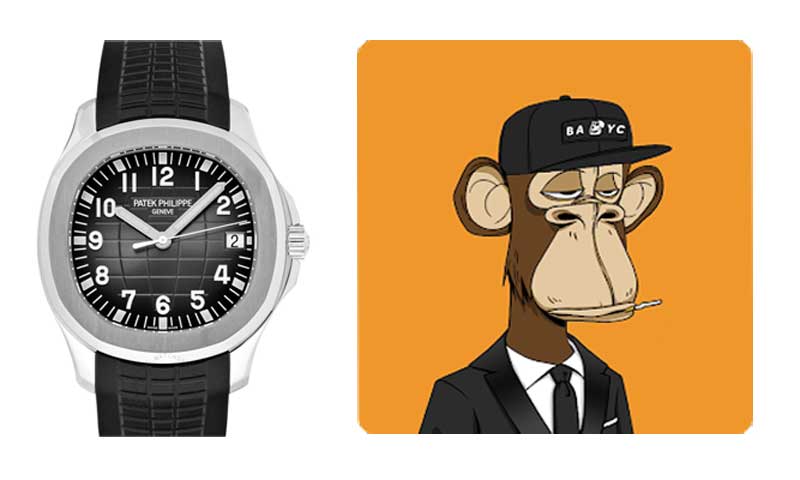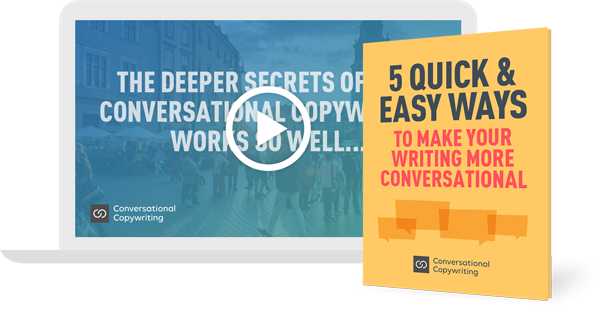
On the left is a Patek Philippe Aquanaut. This is a beautiful, high-end mechanical watch. You can pick one up for about $60,000. More or less.
On your right is Bored Ape #4108. Last time this Ape changed hands, the buyer paid about the same… $60,000.
Bored Ape #4108 is an NFT… a Non-Fungible Token, or unique digital asset.
If you have no idea what NFTs are, or have never heard of Cryptokitties, Cryptopunks, Art Blocks, or the Bored Ape Yacht Club, here is some reading for you.
Anyway…
A few days ago I was on Twitter and someone there was asking whether he should sell his Patek Philippe watch and use the money to buy a Bored Ape.
Wow…
How could this even be a reasonable question?
It turns out that it is.
The idea of swapping a beautifully crafted mechanical watch for what is essentially a cartoon image of a monkey is absolutely reasonable.
Let’s assume for a moment that the watch and the Ape are both priced exactly the same, at $60,000.
First, what do you get with the Patek Philippe?
Owning that kind of watch is never about telling the time. We all have smartphones that tell the time more accurately than the most expensive mechanical watch.
Owning a Patek Philippe is about status. It tells people something about you… about your wealth, taste and sophistication. At least, that’s the idea.
So what about the Ape? What does owning an Ape say about you?
Again, it’s about status.
It says you get NFTs. You get the crypto world. You’re more comfortable using your Metamask wallet than your checking account.
If you own an Ape, you’ll probably use it as your avatar across social media and on community sites like Discord.
Your Ape has now become a key part of your identity online. You’ll attract the attention and respect of other owners of Apes.
Offline too.
You’ll discover you’re being invited to real life meetups in LA, New York and elsewhere.
Which is where we hit upon the true value of being a member of the Bored Ape Yacht Club.
Community.
Identity, and community. A sense of self, and a sense of belonging.
Cryptopunks, Bored Apes, ownership of an iconic piece of generative art, like a Ringer, a Fidenza or a Chromie Squiggle… it’s all about identifying yourself as part of a particular group.
A group of people like you. A group of people who get you, and share many of the same values.
People now want to have more community experiences and less stuff.
A Patek Philippe watch is a wonderful thing. Feel free to send me one on my birthday.
But more and more, people are now defining themselves less through the physical stuff they own, and more through the experiences they share through their chosen communities.
You can spend $60,000 to buy an object.
Or you can spend $60,000 on an NFT… to be part of a community that means something to you… welcomes you… makes you feel good…makes you feel that you belong.
Of course, it doesn’t have to be $60,000.
You can find NFTs for a few hundred dollars or less, and they will give you access to different communities.
What does this mean for marketers and copywriters?
Welcome to the early days of marketing in the metaverse.
It’s time to make some changes to how we write and sell.
As marketers and copywriters we tend to sell “at” an audience.
It’s what we’ve done for decades. We write carefully crafted sales pitches.
In online communities there is a name for this thing we do.
It’s called shilling. And nobody likes it.
It’s a great way to get kicked out of a group, or pushed to the sidelines.
How can you sell within these groups?
Put aside the fancy sales talk. Write in simple, everyday and conversational language.
Give before you ask. Join the community. And be a generous member of that community.
Offer a product or service of real value.
I recently paid for an NFT tracking tool from someone I know from my Twitter stream and a Discord group.
He’s a member of the community, building something for the community.
And he doesn’t do “sales pitches”… he simply keeps us up to date with what he’s doing.
He sells by delivering value. He sells by being part of the conversation.
By all means, take the hard-selling approach you’re selling things, stuff… objects.
But if you’re selling experiences – a sense of being part of something that is greater than yourself alone – you’re almost always better off taking the softer, more conversational approach.
